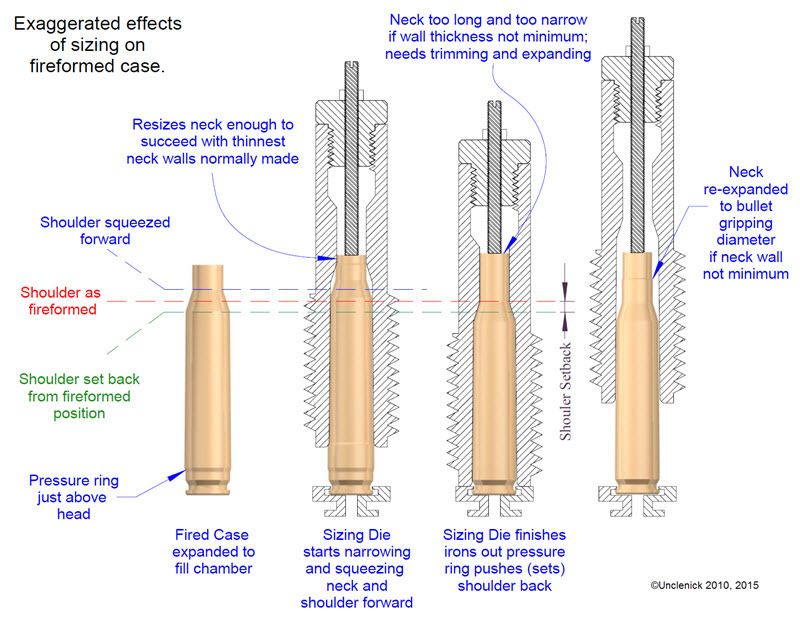IMO why risk irreversibly modifying an expensive $25 die when you can irreversibly modify a $7 shell holder?
That was answered in the first post when he described ripping the top off the shellholder.
If it won't chamber factory ammo, I'd stop worrying about making a die work
__________________
When I ream a chamber I start with cases that are sized for short chambers. When finished I save the short chamber cases. It beats waking up in a new world everyday. Like you, I save a few rounds of new ammo for comparison.
Snyper, I tried to convince reloadrs they could measure the length of the chamber from the shoulder to the bolt face before they left for the range, and now? I am convinced they can’t. I was looking for gun parts at a local gun parts store when a proud owner of an exotic rifle asked to have the length of the chamber checked (head space). The owner/smith informed the proud owner he did not have a head space gage for the chamber; meaning he could not check the length of the chamber.
I said nothing; when the owner left I informed the smith I can check the length of any chamber from the shoulder to the bolt face three different ways without a head space gage. And then the owner asked; HOW? Well you know me; it took me about 2 seconds to recover from that one. He was convinced, and then I suggested he modify his go-gages to go to infinity gages. Anyhow; I did not have to convince him it could be done.
F. Guffey
Short dies; short dies are my favorite, same for forming dies. My favorite forming die is the 308 W forming die. If I only had one forming die it would be the 308 W forming die. If I only had 2 forming dies the other/second forming die would be the 243 W forming die because it is short.

